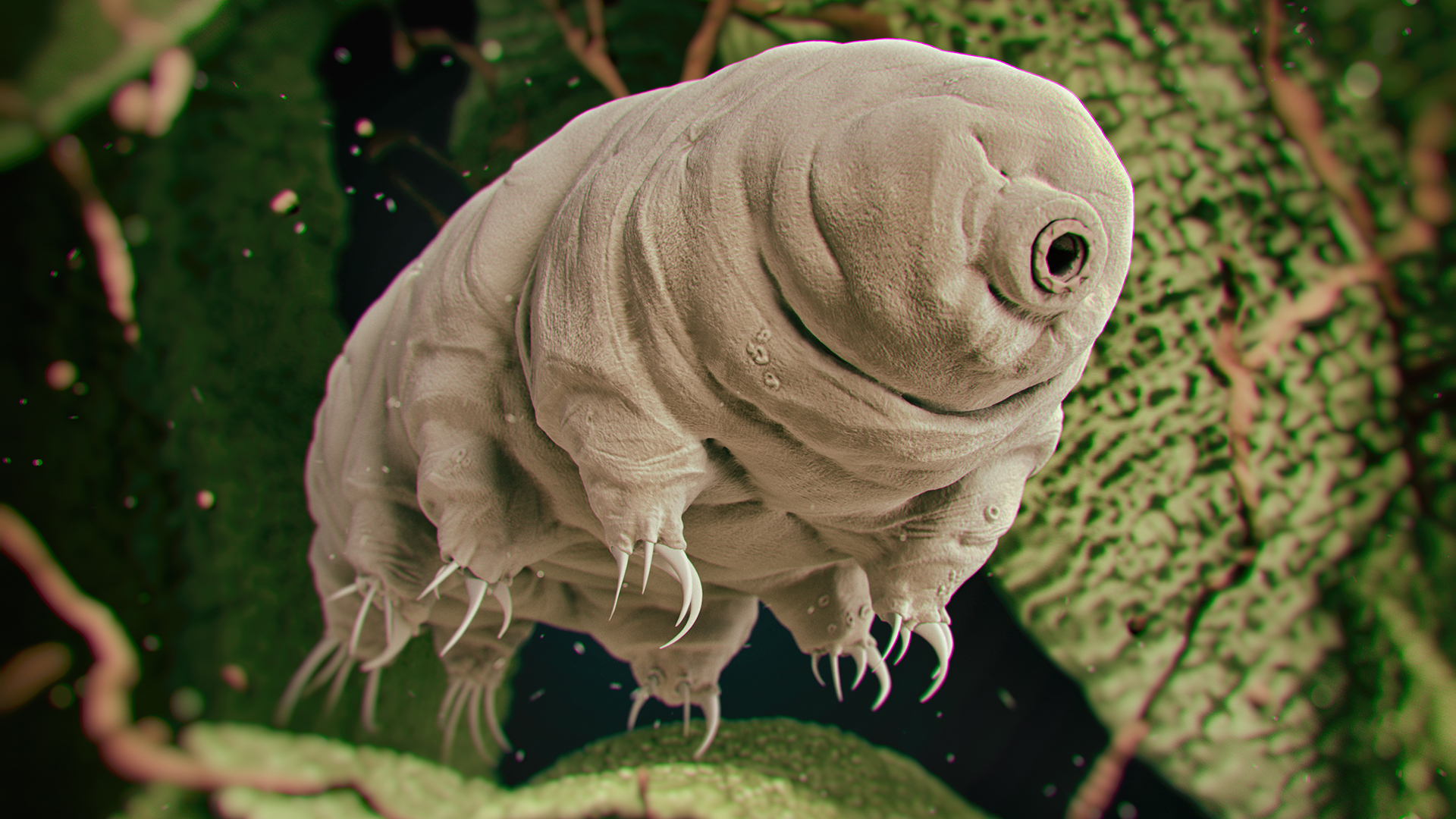
Scientists have finally discovered the molecular trick tardigrades use to enter a near-invincible state that protects them from extreme environments — including the cold vacuum of outer space.
The tiny eight-legged creatures — known as water bears or moss piglets — thrive across our planet. Their abundance is partly due to their hyper-resilience: In harsh conditions the creatures shrivel up into nigh-indestructible dehydrated balls known as a tun state.
The metamorphosis, known as anhydrobiosis, enables the critters to survive extreme temperatures, withstand powerful radiation known as cosmic rays and even come away unscathed after being fired from a gun.
Scientists were previously unsure exactly how they performed this transformation.
Related: We finally know how tardigrades mate
"It has long been understood that tardigrades facilitate these anatomical transitions via active processes," the researchers wrote in the new study. "Yet the mechanism(s) through which tardigrades recognize environmental fluctuations and signal the transitions to enter and exit tuns remains largely unexplored."
But in a new study, published Jan. 17 in the journal PLOS One, researchers revealed the molecular underpinnings of these remarkable survival skills.
First discovered in 1773 by the German zoologist Johann August Ephraim Goeze, tardigrades were named "tardigrada," or "slow stepper," for their methodical, wobbling gait. Around 1,300 species of these microscopic, water-dwelling creatures have been identified, and they go back as far as 600 million years — meaning that they have survived all five of our planet's major extinction events.
The water bears' extraordinary survival skills lie in their ability to transform into an ultra-dehydrated hibernation state. The creatures' legs retract and their plump, segmented bodies curl into small balls that expel 95% of their moisture.
To investigate how the creatures perform this feat, the researchers exposed a group of model species tardigrades (Hypsibius exemplaris) to a number of life-threatening conditions, including dangerous levels of hydrogen peroxide, sugar, salt and temperatures of minus112 degrees Fahrenheit (minus 80 degrees Celsius). By measuring the chemical environment inside the tardigrades' cells, the scientists found the creatures produced free radicals that transformed them into their tun states.
Free radicals — oxygen atoms with an additional unpaired electron — emerge in animal cells during a phase known as oxidative stress. In most animals the process is harmful, as the free radicals react with proteins and chunks of DNA to produce harmful mutations.
But in tardigrades, the scientists discovered that free radicals react with the amino acid cysteine to transform the critters into their near-indestructible state. They confirmed this by inhibiting this cysteine oxidation process, which rendered the tardigrades incapable of entering the tun state.
"We have revealed that tardigrade survival is dependent on reversibly oxidized cysteines coordinating the entrance and emergence from survival states in a highly regulated manner," the researchers wrote in the study.
The scientists' next steps are to see how widely shared this mechanism is across tardigrade species.






